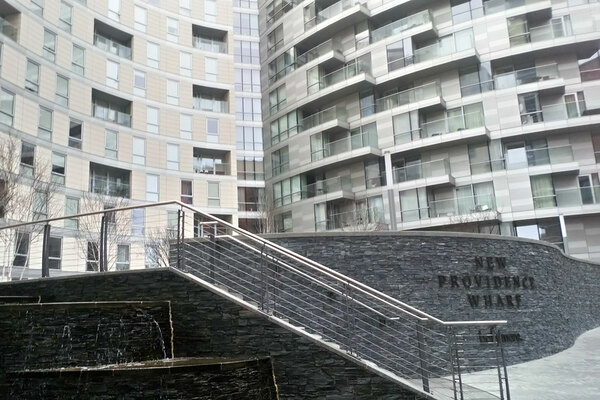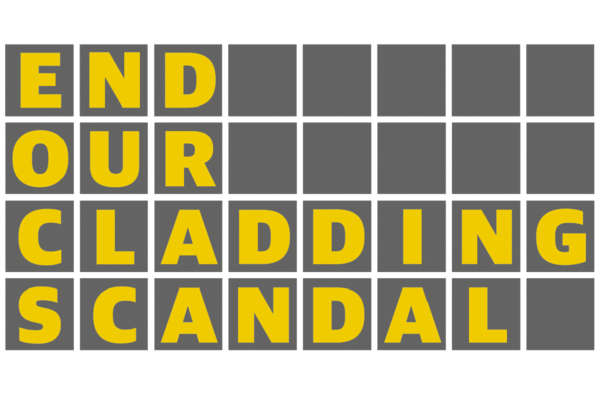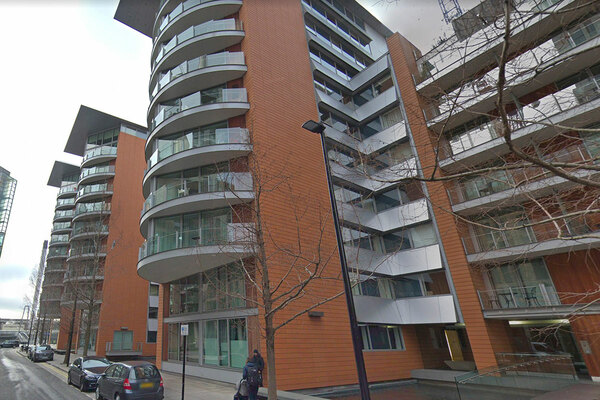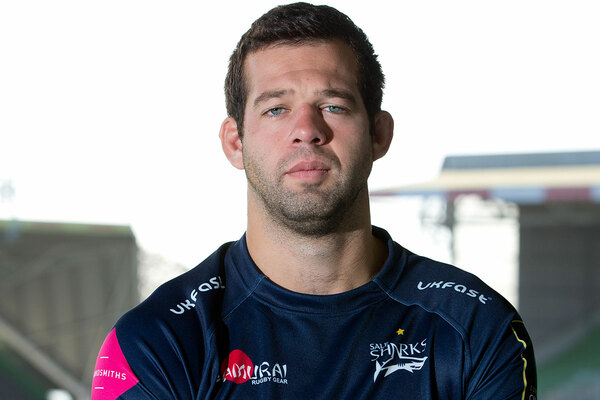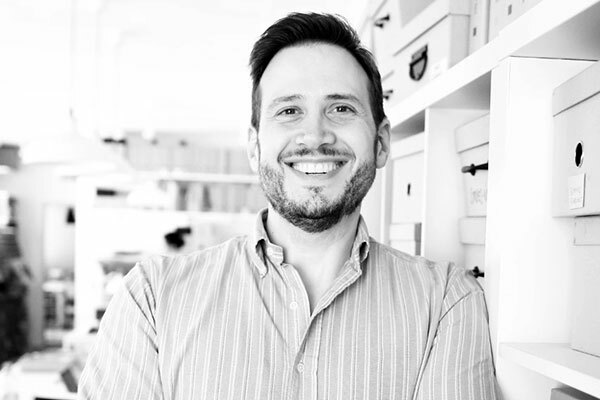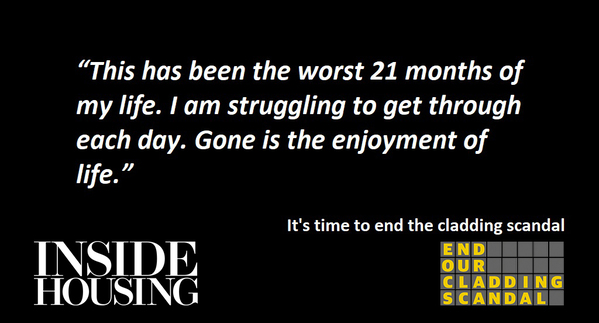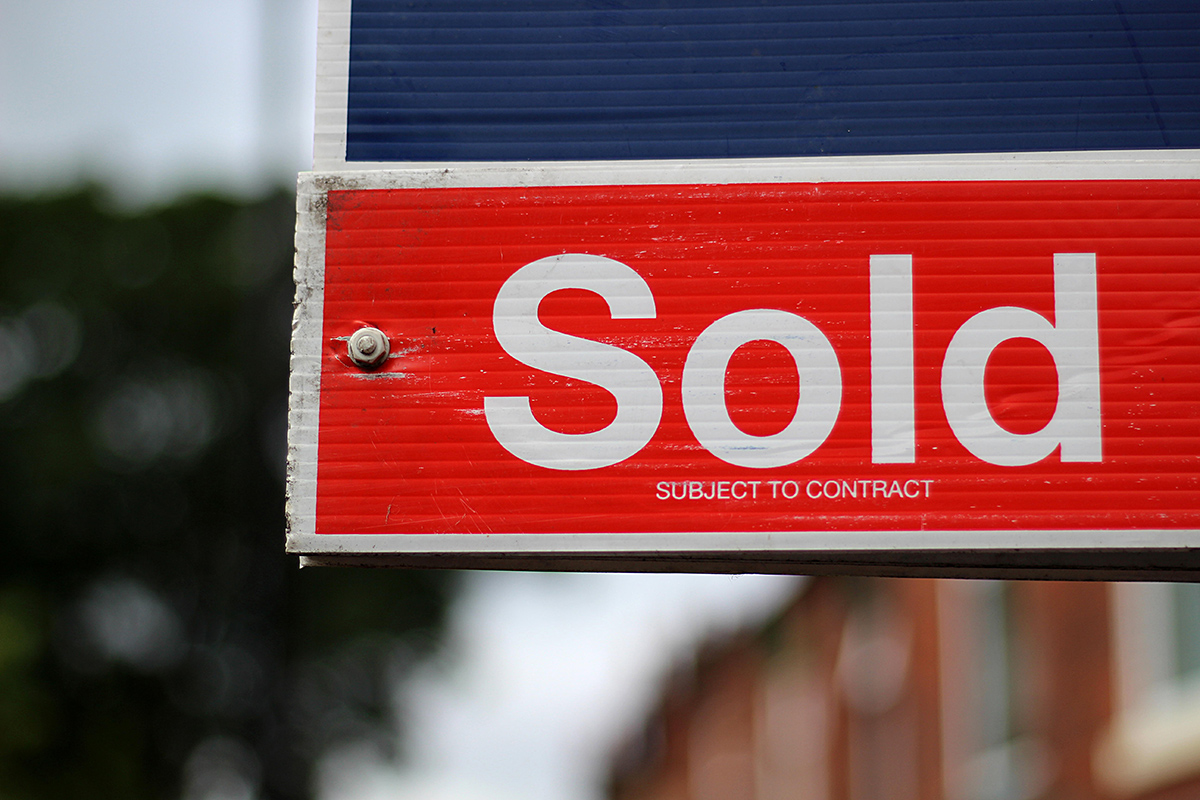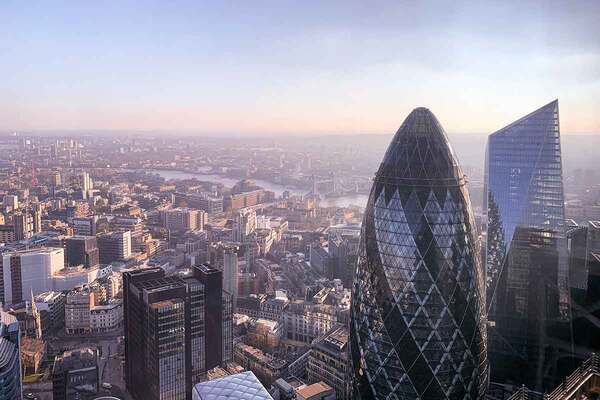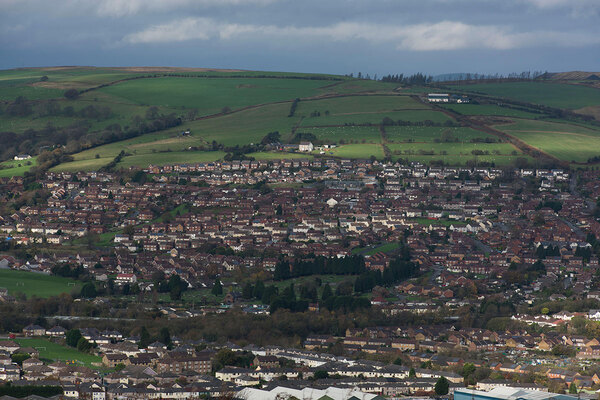Victims of the cladding scandal
As we start our campaign to force the government to pay for the removal of unsafe cladding from private blocks, Gavriel Hollander hears from four leaseholders in four different blocks about how the situation has affected their lives since June 2017
Josh Beaumont, City Gate Manchester
Professional rugby player Josh Beaumont bought his flat in the City Gate development in Manchester in 2016. A year later he was watching with horror as the tragedy of Grenfell Tower unfolded, and began to think about the cladding that wrapped around his own building.
“When you see a high-rise tower on fire and that’s [cladding’s] the issue, it makes you wonder about it,” he says.
“I said at the time, ‘I wonder if we have the same cladding here?’”
It turns out that City Gate was indeed wrapped in the same aluminium composite material (ACM) cladding that aided the deadly spread of the fire at Grenfell.
“You watch what happened at Grenfell and think it could never happen to you, but then suddenly it’s a real concern.
”There are young families here, too. If I had kids, I wouldn’t want them living in a building that isn’t safe.”
However, residents like Mr Beaumont were only made aware of this in 2018 by the building’s management company, Rendall & Rittner. But worse was to come soon after.
“We came back after Christmas to a letter saying that further surveys showed it would cost more [than initially thought] and that it would fall on the leaseholders,” recalls Mr Beaumont.
”There are young families here, too. If I had kids, I wouldn’t want them living in a building that isn’t safe.”
“That caused [an] uproar as we were told a month earlier that the cost would be covered.”
With more surveys being carried out, City Gate leaseholders are still in the dark when it comes to the final cost of removing and replacing the cladding, but Mr Beaumont estimates it could be more than £10,000 per flat.
“The majority of people are young professionals,” he continues.
“A lot are first-time buyers and a lot have big mortgages to pay.
“To have this on top, I’m not sure what a lot of people will do to get the money to pay for the cladding.”
Although the warranty on the building is thought to have expired several years ago, Mr Beaumont thinks the onus should be on the original developer – Bellway – to pay for the remedial work.
“We want the developers to take responsibility. They have a big footprint in the area, and in a perfect world that’s what would happen.”
End Our Cladding Scandal: campaign aims
- Government provides a fund to cover the cost of cladding removal and remedial works on private blocks
- A firm timescale is set out of no more than two years for the work to be carried out
- Residents are reimbursed for the interim fire safety costs incurred, and funding is to be provided for necessary internal fire safety measures identified by a competent fire risk assessor
Fran Reddington, Green Quarter, Manchester
Leaseholders of the two tower blocks that comprise the Green Quarter development in Manchester had some good news early this year after their campaign to force the freeholder of their buildings to replace ACM cladding was successful.
Fran Reddington, who was one of the leaders of the campaign, is reluctant to describe the residents as “lucky”.
“We only got that result because we had a group of very resilient leaseholders who were going to keep it in the public eye,” she tells Inside Housing.
“It took a lot of time, though. It doesn’t feel comfortable and doesn’t feel right, and it is absolutely draining while doing your day job as well. We shouldn’t be reaching exhaustion to get them to do the morally right thing. They should have done that from the beginning.”
“It really brought it home that we were facing financial ruin through no fault of our own”
The battle between Green Quarter leaseholders and freeholder Pemberstone raged for more than 18 months. Residents were told of the presence of ACM cladding in July 2017 and, although Ms Reddington says they “were quite shocked”, they also assumed the cost of removal would be paid for by the freeholder. That assumption was quickly proven to be false.
“It became apparent it [the cost] would come to us and that our management company was not working for us.”
Leaseholders had trouble finding legal representation and had to crowdfund £8,000 just to put in a response to a Section 20 notice from the freeholder, warning that they would be liable for remedial work on the cladding.
They later lost a tribunal hearing, costing an additional £40,000. “It really brought it home that we were facing financial ruin through no fault of our own,” remembers Ms Reddington.
Meanwhile, residents were living in fear of what could go wrong.
“One of the buildings had no sprinklers so we had to have a waking watch,” she explains. “It’s essentially just a guy with an air horn – it’s a lot of cost and doesn’t give you any comfort.”
In February, a consortium, including the freeholder and original developer Lendlease, agreed to pay for the replacement of the cladding, with work due to start in July.
But Ms Reddington says residents aren’t celebrating yet: “It’s not going to go away entirely until the cladding comes off. It still effects everyone.”
William Martin, Metis, Sheffield
”At first we didn’t think much of it, we thought, ‘Let’s see how things go.’” William Martin is recalling how he and fellow residents felt when they were told – a week after the Grenfell fire – that their building has category three ACM cladding.
“I never thought in my wildest dreams we would have to pay for it ourselves.”
The medical school student estimates that leaseholders of the 118 flats of the Metis building in Sheffield have already spent £77,000 of their own money on issues directly related to the cladding.
Yet they still don’t know what the final bill for cladding removal will be and have been left – as he describes it – “in limbo”.
Mr Martin says the building’s freeholders “have been obstructive” and failed to respond to leaseholders until they started organising and making noise in the media. And he is disappointed with the toothless response of the government, even after housing secretary James Brokenshire said the cost of work to remove cladding “must not be passed on to leaseholders”.
“I did everything that society says you should do, and now I’m being punished for it.”
“After that we got excited but there’s been no legislation – our freeholder said it was a PR stunt.”
Meanwhile, Mr Martin says he is trapped in a home he can’t sell, meaning his plans to apply for a new job at a hospital in Manchester have been put on hold until the situation is resolved.
“I can’t sell and I can’t buy. It’s a miserable situation.”
One of his neighbours – he says – had 29 viewings of her flat before eventually receiving an offer. But the sale still couldn’t go through after the buyer was denied a mortgage.
With 166 private tower blocks around the country still covered in cladding similar to that used on Grenfell, Mr Martin says that “thousands of people” are likely to be in situations like his. He is critical of the government’s decision in the immediate aftermath of the tragedy to declare ACM cladding unsafe.
“It was a knee-jerk reaction – they didn’t think through the implications for people like me.
“My entire life is consumed by this. All the things that cost money are on hold. I am really struggling. I can’t sleep at night as I am thinking about everything I worked for.
“I did everything that society says you should do, and now I’m being punished for it.”
Philip Viveash-Brainch Sesame Apartments, Battersea
The Sesame Apartments in Battersea are about four miles from Grenfell Tower. “You can almost see it from the roof terrace,” says Philip Viveash-Brainch.
Mr Viveash-Brainch bought his flat here in a shared ownership deal in 2014. Now the former teacher is one of 80 leaseholders stuck in what he describes as “a nightmare” after unsafe cladding was discovered on the building in the weeks after the tragedy at Grenfell.
Having decided to move out of London to pursue a new career, Mr Viveash-Brainch had found a buyer for his flat but the sale never went through.
“It started to become obvious there was an issue [with the cladding],” he explains. “I offered to put £40,000 aside in case the leaseholders were charged for it. It was indemnifying against the cost. But it became obvious the flat was unmortgageable so my buyer could not buy it.” The inability to sell the flat had “really bad financial consequences”.
Mr Viveash-Brainch had quit his job and had planned to use proceeds from the sale to pay for university fees as he embarked on a new career. He also had half a wedding to pay for – an event that ultimately took place eight days after his buyer officially pulled out of the deal.
“We have been told that we are liable but there are people here who can’t pay. I am living in debt because my flat is unsellable.”
So far, no one has taken responsibility for the replacement of the cladding. Although his landlord, Metropolitan Thames Valley Housing (MTVH), eventually said it would foot the bill for the removal for the shared ownership flats, the promise is meaningless because “the rest is in dispute so nothing is happening and I’m in the same situation I was before”.
Mr Viveash-Brainch is angry at the way the situation had been handled by MTVH, as well as the building’s management company and freeholder.
Similarly to leaseholders in other blocks still fitted with ACM cladding, communication with all parties has left much to be desired.
While disputes rumble on, residents are facing mounting bills for interim fire safety measures, and the final cost could be as much as £600,000, which could fall to leaseholders to pay, not all of whom are able to afford it.
“We have been told that we are liable but there are people here who can’t pay,” he says. “I am living in debt because my flat is unsellable.”
- Martin Hilditch, editor, Inside Housing
- Manchester Cladiators
- UK Cladding Action Group
- Natasha Elcock, chair, Grenfell United
- Sadiq Khan, mayor of London
- Kate Henderson, chief executive, National Housing Federation
- Terrie Alafat, chief executive, Chartered Institute of Housing
- Andy Burnham, Mayor of Greater Manchester
- Lord Gary Porter, chair of the Local Government Association
- Polly Neate, chief executive, Shelter
- Jane Duncan, chair of the expert advisory group on fire safety, RIBA
- Andy Dark, assistant general secretary of the Fire Brigades Union
- Christina McAnea, assistant general secretary, UNISON
- Sir Peter Bottomley, Conservative MP and chair of the All-Party Parliamentary Group on Leasehold and Commonhold Reform
- Jim Fitzpatrick, Labour MP, and member of All-Party Parliamentary Group on Leasehold and Commonhold Reform
- Mark Amesbury, shadow employment minister and Labour MP for Weaver Vale
- Emma Dent Coad, former Labour MP for North Kensington
- Lucy Powell, Labour MP for Manchester Central
- Rushanara Ali, Labour MP for Bethnal Green and Bow
- George Howarth, Labour MP for Knowsley
- Graham Stringer, Labour MP for Blackley and Broughton
- Rob Ellis, presenter, Capital FM
- John Biggs, mayor of Tower Hamlets
- Paul Dennett, mayor of Salford
- Suzanne Richards, councillor and executive member for housing and regeneration on behalf of all Manchester's Labour Councillors
- Sir Richard Leese, Labour councillor and leader Manchester City Council
- John Leech, Manchester Liberal Democrat leader on behalf of all Manchester’s Liberal Democrat councillors
- Darren Rodwell, executive member for housing at London Councils and leader of Barking and Dagenham Council
- George Clarke, TV Architect
- David Walker, bishop of Manchester
- Graham Tomlin, bishop of Kensington
- John Roberts, founder of AO.com
- Josh Beaumont, professional rugby player, Sale Sharks and resident of affected building
- Bill Beaumont, former England rugby captain
- Jeremy Dyson, co-founder of the League of Gentlemen
- Andy Moss, actor who has appeared on Channel 4’s Hollyoaks and resident
- Ross Mullan, actor who has appeared in Game of Thrones
- Get Cape Wear Cape Fly, musician
- Nour-eddine Aboudihaj, spokesperson for Justice4Grenfell
- Mike Leonard, chief executive, Building Alliance
- Kate Kendrick, founder, National Leasehold Campaign
- Martin Boyd, chair, Leasehold Knowledge Partnership
- Paula Higgins, chief executive, HomeOwners Alliance
- Mark Henderson, chief executive, Home Group
- Ben Clay, founding member of the Tenants Union
- Hilda Palmer, acting chair of the Hazards Campaign
- Susan Bright, professor of law, University of Oxford
- Gill Kernick, consultant and former Grenfell Resident
- Phil Murphy, fire safety expert and tower block resident
This list will be updated. Please email peter.apps@insidehousing.co.uk if you want to support the campaign
End Our Cladding Scandal: full coverage
- Government-funded advice agency tells leaseholders they are 'likely' to be liable for cladding costs: LEASE, the government's official advisory service for leaseholders, has been advising residents they are likely to be liable to pay bills for cladding removal
- Residents evacuated after fire at block with Grenfell-style cladding: Residents of Vallea Court in Manchester are forced to flee after a fire breaks out in a lift shaft
- Leaseholders in London block pay nearly £3.5m for cladding removal: Despite promises from ministers to protect leaseholders, residents of the M&M Buildings near Paddington have been told to pay out
- Minister's will have blood on their hands if another death occurs, says MP: A round-up of the parliamentary debate on providing funding to remove dangerous cladding
- Sector leaders call for an end to the cladding scandal: backers of the campaign explain why they are calling on the government to end the scandal
- #EndOurCladdingScandal – campaign launch sees cladding stories go viral: a round-up of the Twitter reaction to the launch of our campaign
- Revealed: the mental health trauma of residents in blocks with dangerous cladding: read about the mental health impacts of dangerous cladding on high rises
- Victims of the cladding scandal: read the stories of some of those impacted by the crisis
- Why we need a cladding fund for private buildings: Manchester Council chief executive Joanne Roney explains why a fund to pay for cladding removal is necessary
- Why Inside Housing is joining with leaseholders to call for an end to the cladding scandal: our deputy editor Peter Apps on why we are supporting the campaign
- End our cladding scandal: the campaign’s aims and backers
Use our graphics to show your support for End Our Cladding Scandal
Click the links below to download images to use on social media (like the one above) to promote End Our Cladding Scandal
End our Cladding Campaign logo for Twitter
Note: If your browser does not allow you to download the image, simply right click on the graphic and click ‘save image as’ instead.

